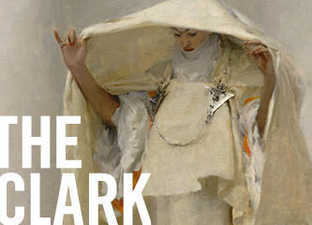Clark Opens Exhibition Highlighting Innovative Early Photographic Technique
WILLIAMSTOWN, Mass. — The Clark Art Institute opens a new exhibition on Feb. 13 that highlights an innovative photographic technique: "A Change in the Light: The Cliché-verre in Nineteenth-Century France."
The exhibit presents forty-four cliché-verre prints from a historic portfolio recently acquired by the Clark. The exhibition presents cliché-verre prints made by five French artists: Jean-Baptiste-Camille Corot, Charles-François Daubigny, Eugène Delacroix, Jean-François Millet, and Théodore Rousseau. The exhibition is on view in the Eugene V. Thaw Gallery in the Clark's Manton Research Center through May 16, 2021.
Cliché-verre is a hybrid process developed in the mid-nineteenth century that combines the techniques of the graphic arts—namely, drawing and printmaking—with those of the then-new medium of photography. The French term derives from early printing terminology and loosely translates as "glass plate," capturing the notion that the metal plate typically used in traditional printmaking is replaced by one made of glass to create these works.
The works presented in "A Change in the Light" are drawn from Forty Clichés-verre (Quarante Clichés-Glace), a portfolio released in 1921 by the dealer and publisher Maurice Le Garrec (1881–1937) from a set of original cliché-verre plates. The Clark's portfolio is one of a special edition of just five that includes two variant printings of each work. In addition to displaying a single complete set of the portfolio's forty compositions, the exhibition features eight pairings of variant prints to demonstrate the range of expressive potential in producing a cliché-verre.
"The collection of prints contained in this exceptional portfolio presents a fascinating look into a technique that is little known today but that once represented a significant advancement in early photography and provides us a rare opportunity to witness the historic intersection of important artists as they explored emerging photographic technology," said Olivier Meslay, Hardymon Director of the Clark Art Institute. "It will be an exciting opportunity for our visitors to see these rare works."
Andrew Kensett, a recent graduate of the Williams College/Clark Graduate Program in the History of Art, curated the exhibition. Kensett undertook the research for this project while he was completing his MA degree in the Williams/Clark program. Kensett worked as a curatorial intern in the Clark's Manton Study Center for Works on Paper under the tutelage of Anne Leonard, the Clark's Manton Curator of Prints, Drawings, and Photographs.
"Although each image in the portfolio is remarkable in itself and speaks to the adventurous experimental spirit of the artists who embraced this hybrid technique, the ability to see expressive variation across double printings is what makes the Quarante Clichés-Glace portfolio—and this exhibition—truly special," said Leonard. "The rich teaching potential of this work, which has already been amply shown in Andrew Kensett's impressive curatorial achievement, will continue to pay itself forward for future generations of students and museum visitors."
Tags: Clark Art,

